Workplace strategies need a modern refresh to keep up with hybrid work, evolving employee expectations, and technological advancements. This guide outlines three key principles to create a workplace that drives productivity, engagement, and retention.

The workplace has changed, and your strategies need to catch up. Increased demand for flexibility, evolving employee expectations, and rapid technological advancements have fundamentally transformed how people think about ‘work.’
The transformation requires more than surface-level adjustments to keep your workplace engaged and thriving. Effective workplace management in this era means rethinking outdated norms. Rigid 9-to-5, desk-bound workdays, siloed teams, and so on no longer fit the bill.
So, what makes a workplace strategy effective in today’s landscape instead?
In this guide, I’ll share three essential elements of a future-ready approach that works for companies of all sizes and across industries. Applying them to your workplace strategy planning will help you build a work environment that meets the workforce’s evolving needs while boosting meaningful results for the organization.
But first, let’s align on a workplace strategy and why it matters.
What is a Workplace Strategy?
I like this Forbes-featured definition of a workplace strategy as the “systematic evaluation of how the workplace is being used to optimize a company’s effectiveness and efficiency.”
In short, a workplace strategy is a plan that aligns your company’s work environment with its business goals, culture, and employee needs. It considers physical workspace, work arrangements, people experience, and everything in between to enhance productivity, collaboration, and employee satisfaction.
A well-thought-out workplace strategy helps organizations adapt to change, attract and retain top talent, and drive business performance.
Many organizations have a dedicated workplace strategist who works closely with leadership and other stakeholders to design and implement strategies that align with the company’s objectives. Their role includes:
- Analyzing data, sentiments, and trends
- Designing workplace solutions
- Measuring the success of workplace initiatives
However, departments such as HR, IT, facility management teams, and executive leadership may also share and oversee workplace strategy responsibilities.
There’s no single formula for a workplace strategy. The approach largely depends on your company’s current status, available resources, and priorities. What works for one organization may not suit another, making it crucial to tailor your strategy to your unique circumstances.
But regardless of the variations, certain principles remain essential for building an effective workplace strategy today.
1. Build a People-First Workplace Strategy
A successful workplace strategy begins with prioritizing the people who bring it to life. Studies showed that employee expectations have shifted dramatically, making listening to your employees more essential for retention, engagement, and productivity.
To implement a people-first workplace strategy, focus on understanding employee expectations, empowering autonomy, and supporting holistic well-being.
Understanding Employee Expectations
Employees now seek more than just a paycheck. They want purposeful work, flexibility, and psychological safety.
Regular employee pulse surveys and open forums provide valuable insights into your workforce needs. For example, if most of your employees feel disconnected in hybrid environments, you may want to consider more collaborative in-office days and more engaging communication channels.
Additionally, you can analyze patterns and trends in office usage, resource preferences, and employee work habits using data from your employee and workplace management software for more informed workplace strategy decisions.
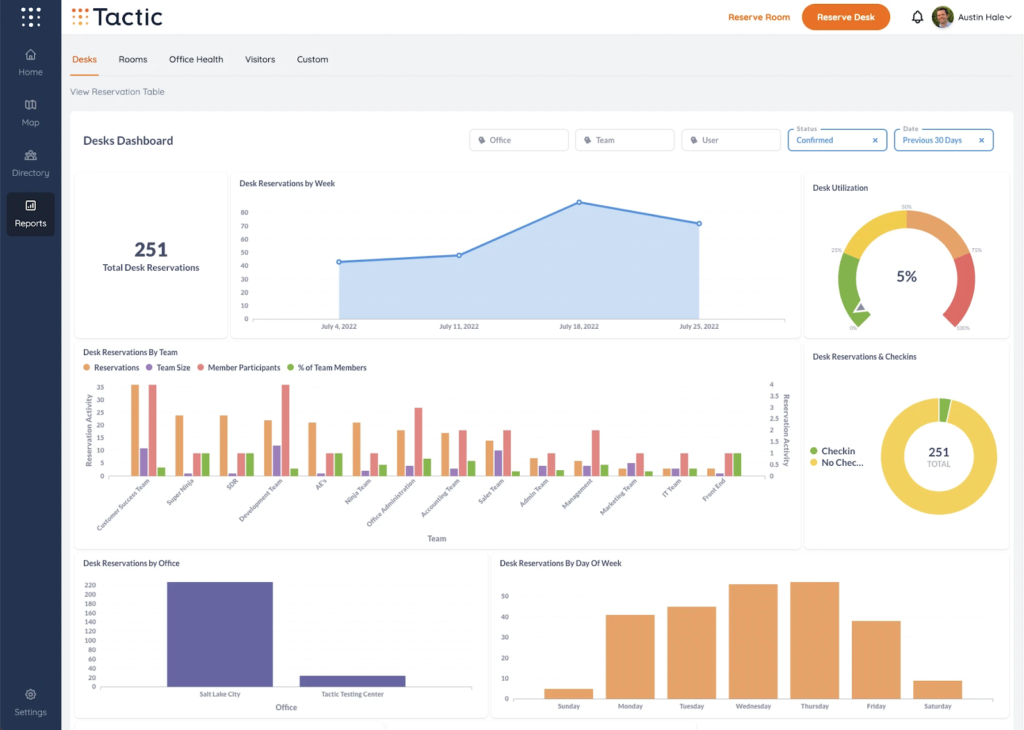
Workplace management software like Tactic can help you collect and track employee preferences on office usage. (Book a FREE demo with us here.)
Prioritizing Employee Experience
Your workplace strategy should put employee experience at the center of every decision and give work a greater sense of purpose. Employees thrive in environments where their contributions are valued, their tools and processes are user-friendly, and their work is connected to meaningful outcomes. Organizations focusing on these areas see greater engagement, retention, and productivity.
For example, consider onboarding processes. A streamlined, well-designed onboarding system helps new employees feel supported and purposeful from day one. Instead of overwhelming them with dense manuals or disjointed training sessions, providing an intuitive, digital-first onboarding platform tailored to their role ensures clarity and confidence.
Another example is implementing a desk booking platform for hybrid teams. A user-friendly system enables employees to schedule their in-office days and select preferred working areas effortlessly, ensuring easy access to their needed resources. For administrators, the platform eliminates manual tasks and provides accurate records of space utilization through automated booking and check-in processes. This streamlines operations and enhances the overall experience for both employees and management.
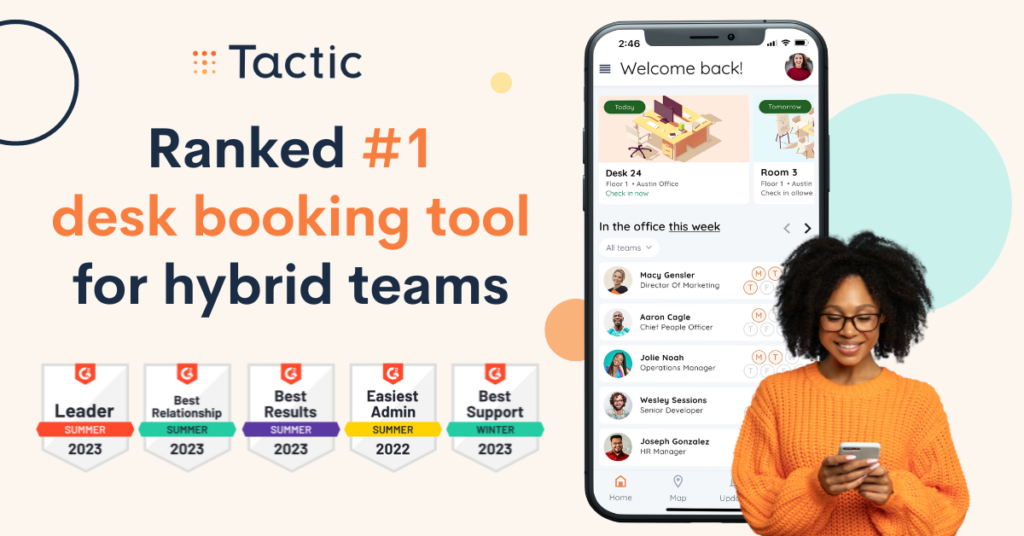
2. Redesign Offices into Experience-Driven Workspaces
As flexibility becomes a top priority for employees, the office is no longer the default hub for work. To stay relevant, it must evolve into a purposeful space that not only supports productivity but also collaboration and connection—areas where remote work often falls short.
Purpose-Centric Office Design
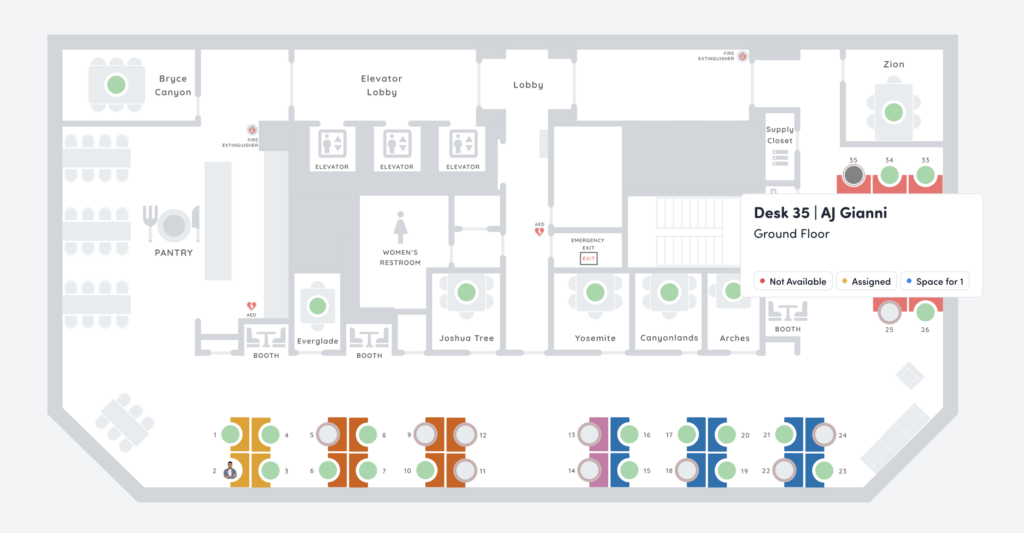
Modern offices must go beyond static layouts and one-size-fits-all designs. Instead, they need to prioritize flexibility, intentionality, and adaptability to meet the diverse needs of their hybrid workforce.
- Dynamic Spaces for Diverse Work Modes: A recent Gensler research confirms that diverse space types are key to high-performing workplaces. They have more options and greater access to spaces for critical work activities than low-performing ones. This ensures that employees find the right environment for whatever task they’re tackling when coming to the office.
- Modular Furniture for Flexibility: Modular furniture is a game-changer for office adaptability. Teams can reconfigure spaces to fit the needs of the moment, whether it’s for a workshop, a formal meeting, or an informal gathering. This flexibility empowers employees and helps organizations future-proof their office layouts.
- Spaces That Build Connection: Offices should prioritize spaces that foster connection and community, as that’s what encourages your teams to come to the office, not RTO mandates. Lounge areas, café-style seating, or informal meeting zones encourage spontaneous interactions that drive creativity and strengthen relationships. These spaces create a “pull factor,” giving employees a reason to choose the office over remote work.
- Designed with Intent, Not Luxury: Experience-driven doesn’t mean extravagant. Simple, intentional design elements—natural lighting, plants, and ergonomic furniture—can significantly impact employee well-being and productivity.
>> For more guidance on a good office design, check out our guide on Hybrid Office Space.
Utilizing Practical Workplace Management Tools
The office arrangement ‘makeover’ must be paired with technology to ensure efficiency and smooth operations. Hybrid office management tools like desk and room booking platforms are vital for creating a seamless on-site experience.
- Streamlined Workspace Reservations: Desk and room booking tools let employees reserve spaces that match their specific needs, whether a meeting room for team brainstorming or a quiet desk for focused work. This eliminates the frustration of arriving at the office only to find no available space.
- Data-Driven Space Management: Facility managers can use booking data to understand how spaces are utilized and make informed adjustments. For example, if collaborative areas are underused, they might be converted into wellness spaces or additional focus zones. These insights ensure that every square foot of the office serves a purpose, minimizing waste.
- Improved Coordination for Hybrid Teams: These tools also help hybrid teams align their schedules with real-time office maps and working location features. Integration with shared calendars. These features allow employees to proactively plan for effective in-person collaboration days and address a common challenge of hybrid work: ensuring the right people are in the office at the same time.
- Enhanced Employee Experience: These tools create a frictionless office experience by simplifying logistics like workspace reservations. Employees can focus on their work rather than navigating administrative hurdles, making their time in the office more productive and enjoyable.
Workplace management tools complement well-designed office spaces by removing barriers to productivity and connection. Together, they form the backbone of a workplace strategy that balances flexibility with in-person collaboration.
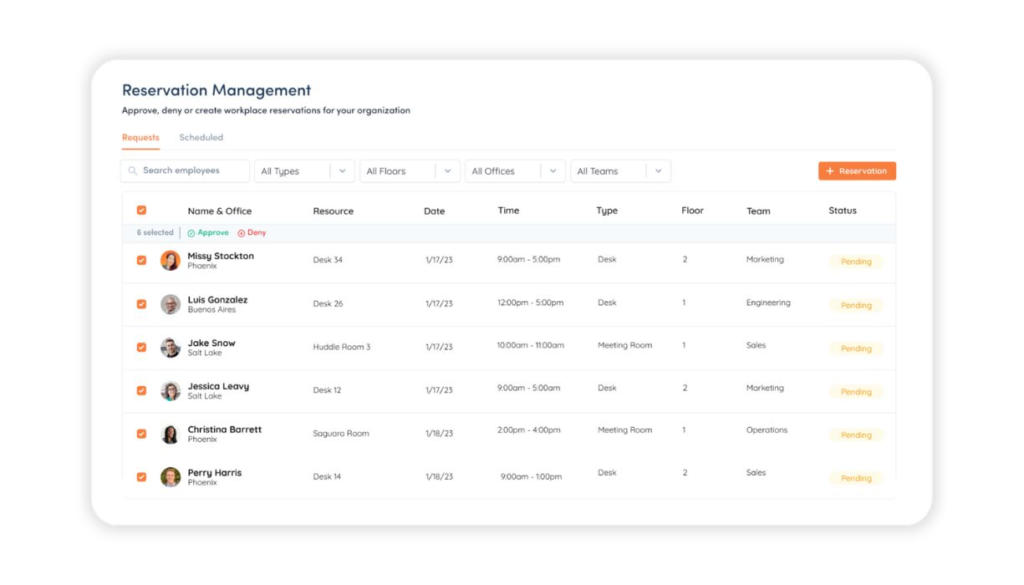
3. Embed Flexibility in Your Workplace Strategy
Hybrid work is here to stay. Many refer to working elsewhere if they no longer have the flexibility at work. Rather than debating its validity, you’re better off thinking about how to make hybrid work effective now. An effective hybrid workplace strategy requires a clear framework and the right tools to enable it.
Establish Clear Hybrid Work Policies
Flexibility works best when clear and consistent policies anchor it. Hybrid work can quickly become chaotic without guidelines that balance structure and autonomy.
Establishing policies that define expectations—such as mandatory in-office collaboration days, core working hours, and remote work processes—provides employees clarity while aligning hybrid practices with business goals.
For example, a policy requiring teams to work together in the office on two designated days a week ensures opportunities for face-to-face collaboration without undermining flexibility.
It’s also essential to address practical concerns like how to book office spaces, coordinate schedules, or manage remote attendance during key meetings. These guidelines create a cohesive and predictable hybrid experience for all.
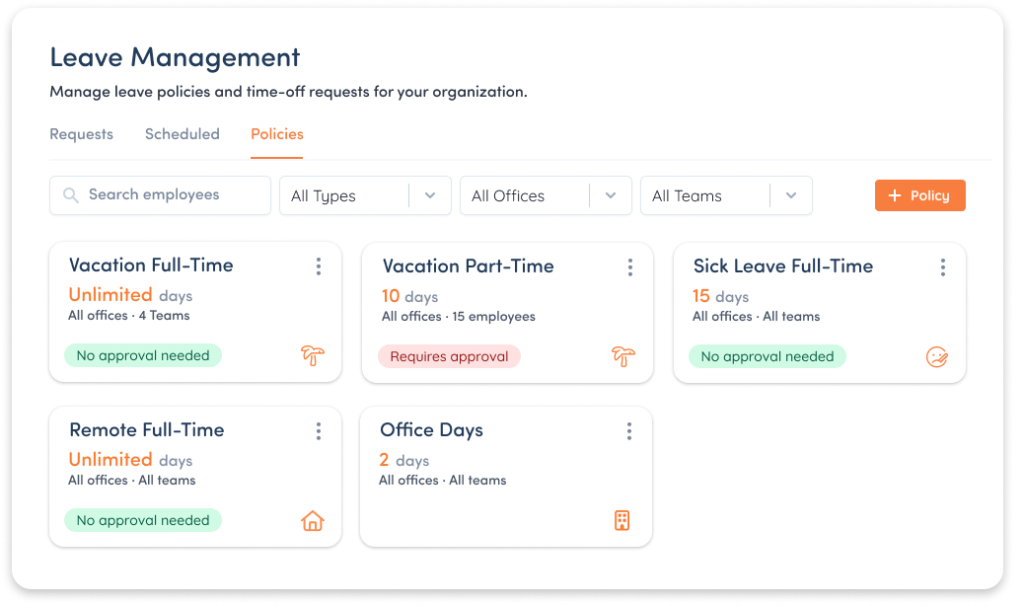
Supporting Hybrid Operations with Technology
As mentioned earlier, tools like desk and room booking platforms play a pivotal role in streamlining hybrid workplace management. In fact, a recent CBRE research revealed that 64% of companies consider room-booking software a top priority for their hybrid workplace strategy.
Some workplace reservation systems, like Tactic, have built-in features to let you consistently enforce your hybrid work policies and ensure smooth operations. These tools make it easier to communicate workplace expectations, manage space allocation, reduce scheduling conflicts, and provide employees with a seamless office experience. With a reliable system in place, hybrid work policies move beyond theory and become actionable, scalable, and effective.

Equally essential is bridging the communication gap between in-office and remote team members.
Online collaboration platforms and advanced video-conferencing tools are indispensable in hybrid meeting rooms. They ensure remote participants are fully included in discussions and collaborative efforts, fostering equitable engagement regardless of location. According to the same CBRE report, upgrading video-conference tools in the office is among the top three priorities of 82% of companies.
Wrapping it Up
Your workplace strategy must evolve to meet the demands of a transformed work environment. Flexibility is no longer a benefit; it’s an expectation. Employees now seek purposeful work, autonomy, and productive workspaces of choice.
A future-ready workplace strategy hinges on three key principles: listening to employees and putting their needs at the forefront, redesigning offices into intentional, experience-driven spaces, and embedding flexibility with clear policies and robust technology. These elements don’t just improve day-to-day operations; they drive meaningful results, from better engagement and retention to higher productivity and organizational resilience.
The tools and frameworks you implement today will define the success of your workplace strategy tomorrow. Now is the time to rethink, redesign, and reimagine how work gets done.
We can greatly help you along that journey with our Tactic’s hybrid workplace management suite. Want to see how we can tailor the solution to your specific needs? Book a 30-minute demo with us here.